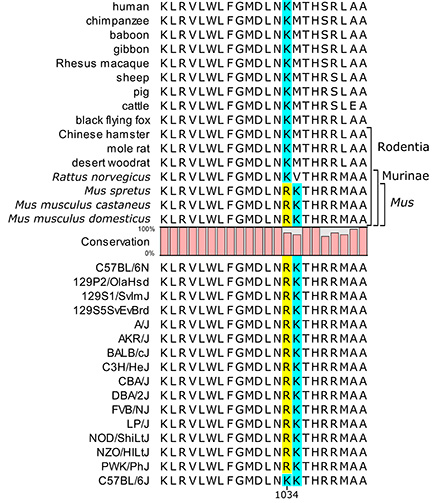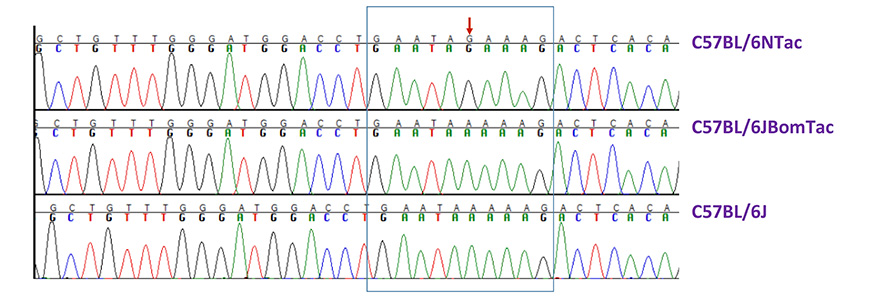Reduced Neutrophil Recruitment in C57BL/6J
In this study, the authors compared C57BL/6J and C57BL/6NTac mice and noted that C57BL/6J mice had reduced neutrophil recruitment. Initially hypothesizing the difference was due to a microbiome effect, possibly segmented filamentous bacteria (SFB), they found that this deficit had a genetic basis and was linked to a previously identified single nucleotide polymorphism (SNP) in the Nlrp12 gene.They showed that the C57BL/6J missense mutation was dominant and that the associated neutrophil defect was phenocopied in Nlrp12-/- mice on either the C57BL/6N or BALB/c backgrounds.
How is the Immune Response in C57BL/6J Affected?
NLRP12 (Nod-like receptor pyrin domain containing 12) is a component of the innate immune system that regulates immune cell trafficking and cytokine production. The C57BL/6J mutation (G to A at position 3,222,537, Chr. 7) causes an amino acid substitution in NLRP12 (arginine to lysine at residue 1034) in a conserved leucine rich repeat (LRR) domain which is putatively important for protein-protein interactions.The affected LRR domain from NLRP12 is highly conserved among mammals. There are two important exceptions within the Mus genus:
- lysine (K) to arginine (R) substitution at position 1034
- methionine (M)/valine (V) to lysine (K) substitution at position 1035

Figure 1: Multiple sequence alignment of NLRP12
(LRR 8 domain)
Figure 1: Multiple sequence alignment of NLRP12
(LRR 8 domain)
It is unclear how either of the mouse NLRP12 variants functionally compare to human NLRP12; however, these new data show that the C57BL/6J Nlrp12 variant is a loss-of-function mutation as compared to Nlrp12 from other mouse strains (including C57BL/6N and BALB/c).
When Did This Mutation Occur?
The mutation is specific to C57BL/6J and related substrains, and is not present in C57BL/6N strains. This suggests that the C57BL/6J mutation arose after the separation of the C57BL/6J and C57BL/6N substrains in 1951.Our data show that a related C57BL/6J substrain, C57BL/6JBomTac, also carries this mutation, indicating that this mutation arose prior to 1971 when this substrain separated from the ancestral C57BL/6J.
Moreover, sequence data from 3 wild-sourced mouse lines and 16 inbred strains show that the C57BL/6J variant is unique in the Mus genus. These findings emphasize the importance of indicating the full designation of mice used in studies or in the creation of genetically modified mouse models.
Documenting C57BL/6 Substrains
There are at least 16 different C57BL/6 substrains that have diverged since the original isolation of this line in the 1930s. There are numerous genetic differences between the two main C57BL/6 branches (C57BL/6J and C57BL/6N). Furthermore, substrains within each of these two branches, as maintained by different vendors, are distinct and each carries a unique spectrum of genetic characteristics.Given this diversity, it is important that researchers understand and appropriately document the specific inbred stain/substrain/source used in studies. The literature is full of instances of incomplete details regarding the specifics or sources of "C57BL/6" mice - this could refer to any one of at least 16 different inbred strains with different genetic profiles!
These new findings emphasize the importance of completely indicating the full designation of mice used in studies, and in the creation or maintenance of genetically modified mice. Examples of a full designation for a C57BL/6 inbred strain would include: C57BL/6NTac or C57BL/6JBomTac.

















.jpg)

.jpg)
.jpg)
.jpg)
.jpg)





.jpg)


.jpg)
.jpg)




.jpg)




.jpg)

.jpg)






